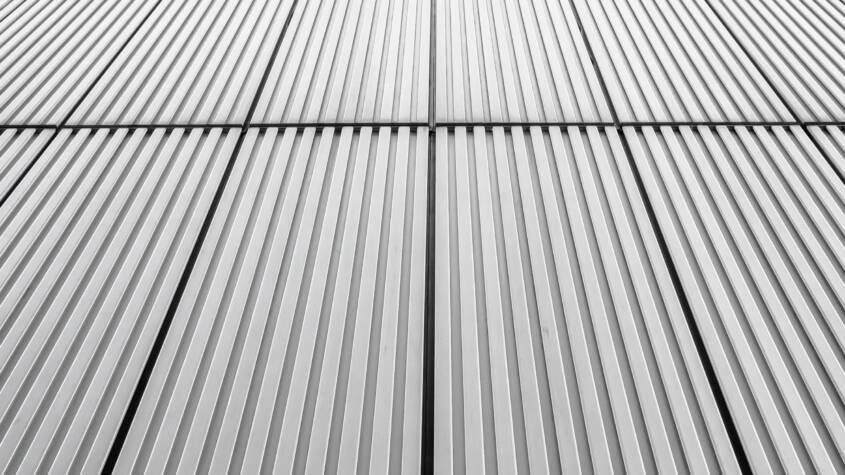
It offers corrosion resistance, strength, and ease of installation compared to traditional wood or steel battens. These qualities make it a practical choice in various building applications.
They are favored in both residential and commercial projects due to their low maintenance and long-lasting performance. Aluminium batten can be shaped and sized to fit different structural requirements, providing flexibility for architects and builders. Understanding their benefits helps in selecting the right material for exterior and interior finishes.
Aluminium Batten Features and Applications
Aluminium battens offer a balance of strength, durability, and versatility. Their use spans various architectural and design contexts, providing functional and aesthetic benefits. Understanding their features, typical applications, and comparisons to other materials helps clarify their value.
Key Characteristics of Aluminium Battens
Aluminium battens are lightweight yet strong, with a high strength-to-weight ratio. They resist corrosion, making them suitable for outdoor and humid environments. Their surface often features anodizing or powder coating, improving durability and allowing a range of finishes.
They are dimensionally stable, not warping or bending easily under temperature changes. This makes installation straightforward and long-lasting. Aluminium’s recyclability also appeals to sustainable building practices.
Common Uses in Architecture and Design
Aluminium battens appear in exterior cladding, sun shading devices, and interior wall treatments. They form linear, modular patterns that provide visual interest and functional shading. Their lightweight nature reduces structural load on buildings.
In fences and balustrades, they offer durability and low maintenance. Designers often choose aluminium battens for façade rainscreens because of their corrosion resistance and ease of fabrication into various profiles.
Comparing Aluminium Battens to Alternative Materials
Compared to timber, aluminium battens resist rot, mold, and insect damage. They require less maintenance over time but lack the natural warmth of wood.
Steel battens offer higher tensile strength but are heavier and more prone to corrosion without protective coatings. Aluminium is generally more cost-effective for large-scale applications requiring corrosion resistance and lighter weight.
PVC battens are cheaper and corrosion-free, yet lack the structural strength and premium finish aluminium provides.
Installation and Maintenance Best Practices
Proper handling during installation ensures aluminium battens perform well and remain secure. Regular cleaning prevents buildup and damage. Attention to environmental factors and fastener choice supports long-term durability.
Guidelines for Proper Installation
Aluminium battens must be fixed to clean, dry surfaces with compatible fasteners, such as stainless steel screws, to avoid corrosion. Spacing should follow manufacturer specifications to balance strength and flexibility, typically between 300mm and 600mm centers.
Batten ends require correct alignment and clearance to accommodate thermal expansion. Sealing joints with appropriate weatherproof materials prevents water ingress and potential corrosion. Using power tools at controlled torque avoids deforming the battens or stripping fasteners.
Properly installed battens should allow for ventilation behind cladding to reduce moisture buildup. Inspect all fixings after installation to ensure tightness and stability.
Cleaning and Upkeep Recommendations
Routine cleaning involves washing battens with mild soap and water to remove dirt and pollutants. Avoid abrasive cleaners or harsh chemicals that may damage the aluminium’s finish.
In coastal or industrial areas, more frequent cleaning is advisable due to increased salt or chemical exposure. A soft brush or cloth helps maintain the surface without scratching.
Inspect battens periodically for signs of corrosion, dents, or loose fasteners. Promptly address any damage by tightening screws or replacing affected sections to maintain structural integrity.
Longevity and Durability Considerations
Aluminium battens are resistant to rust but can suffer from surface oxidation or corrosion in aggressive environments. Using anodized or powder-coated battens enhances resistance and visual lifespan.
Proper installation minimizing water retention and ensuring drainage extends the batten’s useful life. Periodic maintenance supports longevity but avoid over-tightening fasteners during inspections to prevent warping.
Selecting battens rated for local climate conditions is crucial. Exposure to UV light and humidity demands better-quality finishes or protective coatings to reduce wear over time.
Mejora Tu Camper con una Ventana techo caravana y Claraboya de Techo de Baie-Car.com
En baie-car.com, diseñamos y fabricamos Ventana techo caravana y claraboyas de alta calida…










